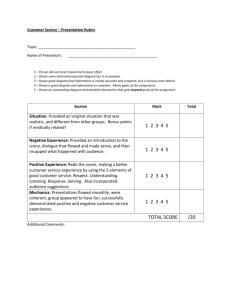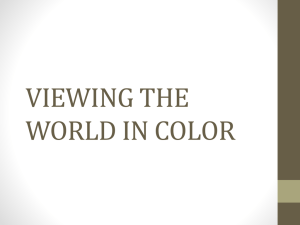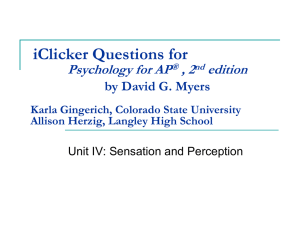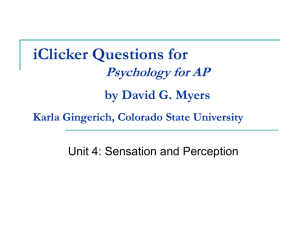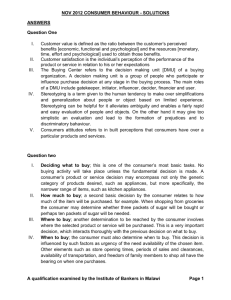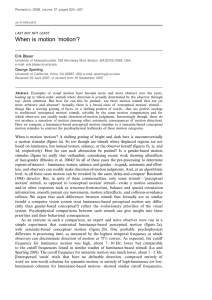Gestalt Laws of Perceptual Organization
advertisement
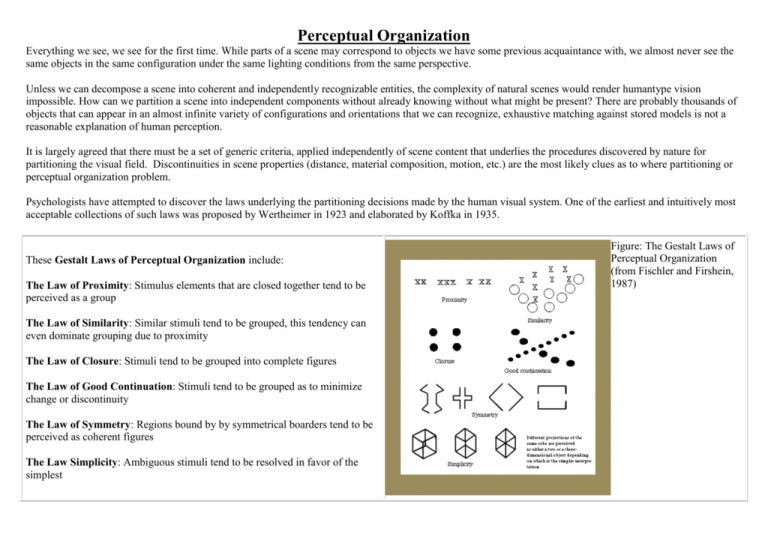
Perceptual Organization Everything we see, we see for the first time. While parts of a scene may correspond to objects we have some previous acquaintance with, we almost never see the same objects in the same configuration under the same lighting conditions from the same perspective. Unless we can decompose a scene into coherent and independently recognizable entities, the complexity of natural scenes would render humantype vision impossible. How can we partition a scene into independent components without already knowing without what might be present? There are probably thousands of objects that can appear in an almost infinite variety of configurations and orientations that we can recognize, exhaustive matching against stored models is not a reasonable explanation of human perception. It is largely agreed that there must be a set of generic criteria, applied independently of scene content that underlies the procedures discovered by nature for partitioning the visual field. Discontinuities in scene properties (distance, material composition, motion, etc.) are the most likely clues as to where partitioning or perceptual organization problem. Psychologists have attempted to discover the laws underlying the partitioning decisions made by the human visual system. One of the earliest and intuitively most acceptable collections of such laws was proposed by Wertheimer in 1923 and elaborated by Koffka in 1935. These Gestalt Laws of Perceptual Organization include: The Law of Proximity: Stimulus elements that are closed together tend to be perceived as a group The Law of Similarity: Similar stimuli tend to be grouped, this tendency can even dominate grouping due to proximity The Law of Closure: Stimuli tend to be grouped into complete figures The Law of Good Continuation: Stimuli tend to be grouped as to minimize change or discontinuity The Law of Symmetry: Regions bound by by symmetrical boarders tend to be perceived as coherent figures The Law Simplicity: Ambiguous stimuli tend to be resolved in favor of the simplest Figure: The Gestalt Laws of Perceptual Organization (from Fischler and Firshein, 1987)

